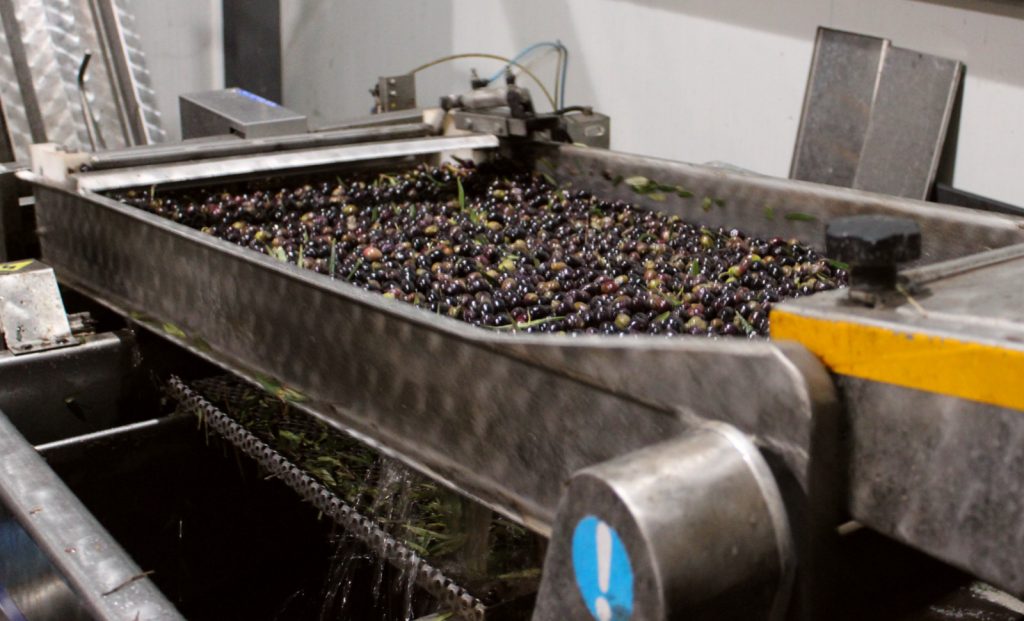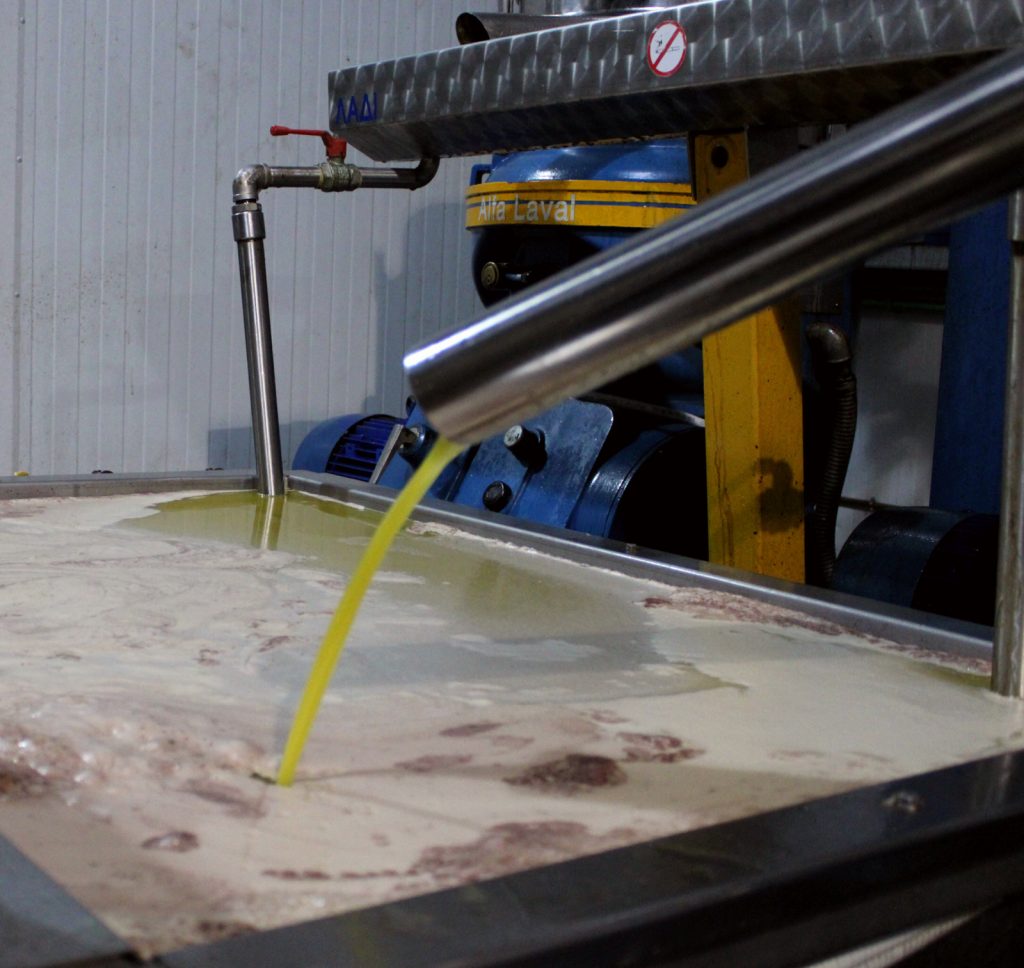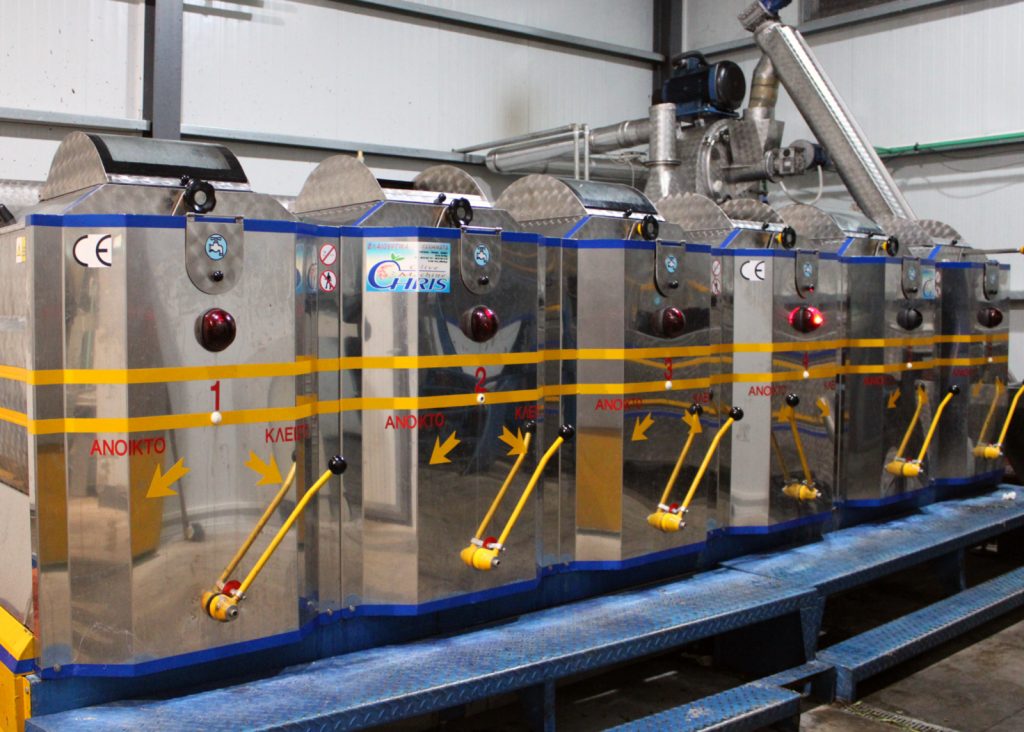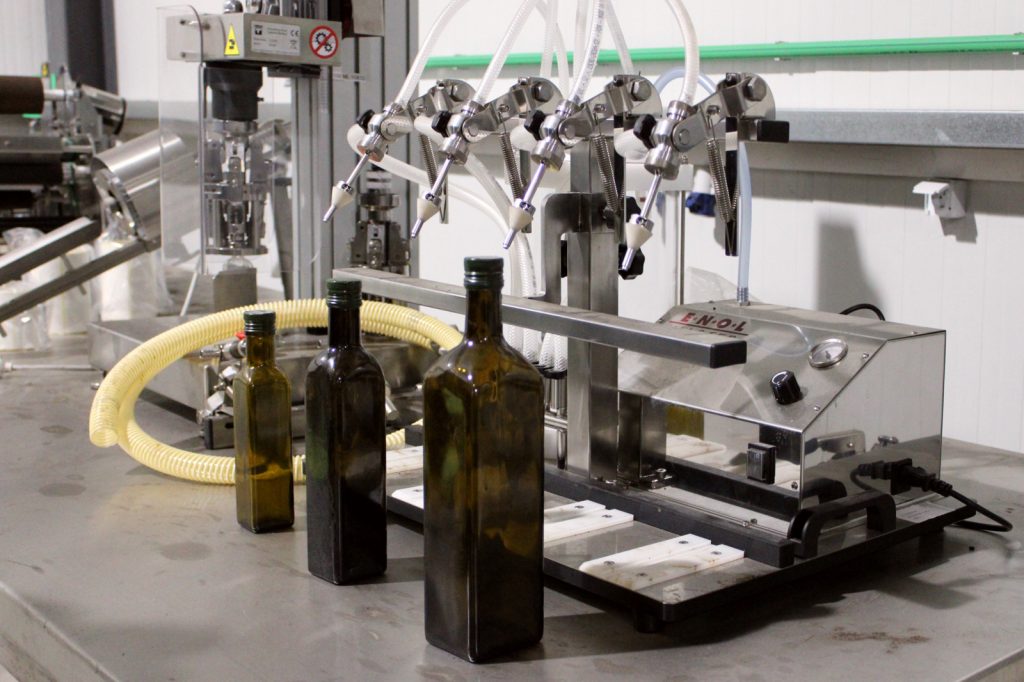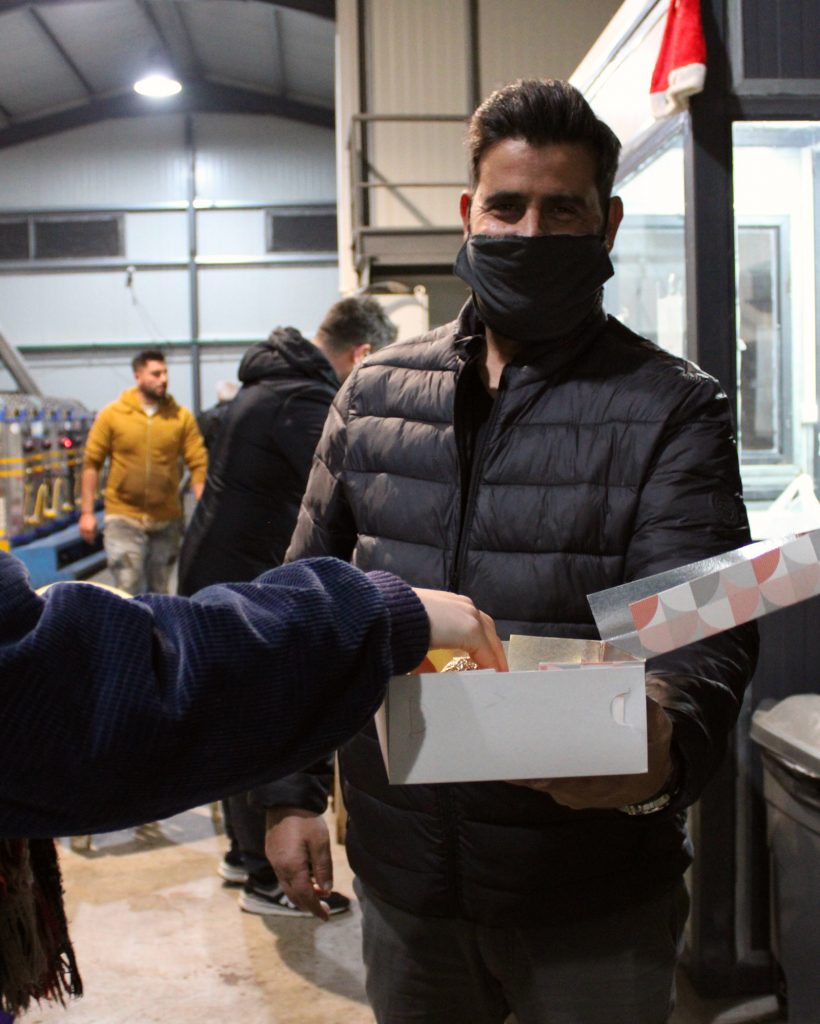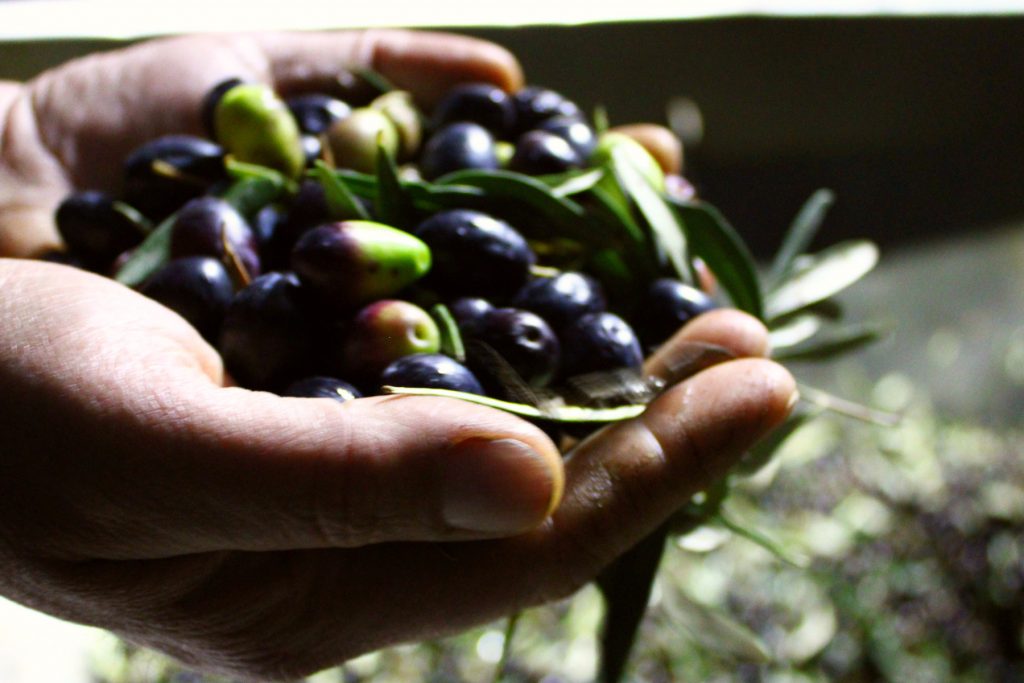
The Olive Oil Co-operative of Kryoneri established around 1970 with the purpose to serve the village’s olive farmers. The annual olive production is about 320,000 tones, harvested from more than 55,000 thousand trees. The olive orchards of the village are located at an altitude of 500-600 meters. The oil obtained has an acidity of 0,4-0, 5 points, giving it an excellent flavour.
 The first type of mill was a classic one with elaiopana (Moutafis) and operated until 1982. Because it had a low performance, it was replaced with a new centrifuge.
The first type of mill was a classic one with elaiopana (Moutafis) and operated until 1982. Because it had a low performance, it was replaced with a new centrifuge.
In 1994, due to an increase in olive production, the factory was equipped with modern machines. The cooperative is a unit serving producers and non-partners.
The olive press
The olive press in the village belongs to the agricultural cooperative founded in November 1970. The plot was purchased by Athanassouli 1967.
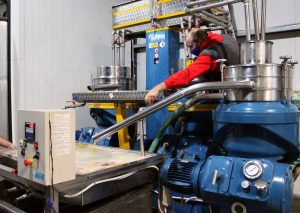 Within three years, the house was built and shaped space. In November 1970 came the machines. Partners then started the operation of the mill with 104 members, which has now increased to 170 members. The first olive mill was centrifugal, however, the first five years of operation haven’t been very successful.
Within three years, the house was built and shaped space. In November 1970 came the machines. Partners then started the operation of the mill with 104 members, which has now increased to 170 members. The first olive mill was centrifugal, however, the first five years of operation haven’t been very successful.
Previously, there were two other private oil presses operating in Kryoneri, however, those have stopped operating in 1970. The second oil mill started in 1975 and worked the classic way with moutafia (press bags) by 1982. In 1982 they changed into centrifuge machines, which has operated until 1995. In 1995 a fourth centrifugal olive press has been installed, which is what we have today. It consists of the following machines: laundry, leaves cleaner, olives lift, crushers, mixers, decanter and oil separator. In good production years about 1,800,000 tons are elaborated, producing 350,000 tons of olive oil.
Traditional Mills Kryoneri
Kryoneri, known as Matsani until the 1950’s, has had three working olive presses since the 19th century. They are located near the river that divides the village in two settlements.
These are the following family factories, which have been operating traditional oil factories in the village: a) family Georgios Papanikolaou, b) family Angelos Papathanasiou and c) family Christos Dimou (Papachristos).
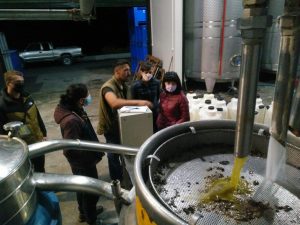 The main reason for developing these traditional units was the large quantity of olives gathered from residents Kryoneri, as the olive harvest has been and is the main and unique winter pastime of residents. Olive and raisins have been the main products providing income to the old residents of Kryoneri necessary for the development of each individual and family well-being of the village.
The main reason for developing these traditional units was the large quantity of olives gathered from residents Kryoneri, as the olive harvest has been and is the main and unique winter pastime of residents. Olive and raisins have been the main products providing income to the old residents of Kryoneri necessary for the development of each individual and family well-being of the village.
The three oil presses were built on the west bank of the stream which runs through Kryoneri. The river is formed by the winter rain waters that descend from the Apagoremeno Forest and streams that cross the slopes above it and enriched by the sources of the upper village fountain. Was and is one of the main water stream forming the river Elisson.
The water was the main operating lever one oil mill. The main process followed in the production of oil in the early years was as follows: From the sources of the upper Fountain transported with an iron pipe water in oil mill, which channeled a concrete tank and from there to warm pot. The olives were gathered in quantities, cleaned of branches and leaves, washed in concrete tubs and fed into a large round stone threshing floor, in the centre of which there were two cylindrical stones tied together on a rotating iron shaft. With the help of animals, mainly mules, the stones were turned and the olives were mashed. Then the pulp, known as “hamouri”, was collected and the mill workers used containers to transfer the pulp to the square or circular, woven tricot or harp collectors, called moutafia. Then placed one “moutafi” on top of the other and squeezed with a wooden hand-twist, called “strivla”, to separate the liquid mixture. The moutafis were then opened and hot water was poured into them. The same procedure was repeated by turning the strivla. The oil was then collected in large containers (libes) with the help of the hot water and distributed to the owners, while the “liokoki” (the dry, liquid-free extract of the olive tree) was removed from the moutafis each time. With the passage of time and the introduction of electricity to Kryoneri new electric steel mills components were installed (such as then press instead of the strivla etc.) to further facilitate the production of olive oil.
Of the two old olive presses that were in operation until the 1980’s, one is now preserved in the area off the municipality olive mill. The oil mill that was owned by the Papathanasiou family was destroyed in late 1980, in order to be constructed as new in the area of community square. The oil mill that was owned by the Papanikolaou family, was located near the present bridge and got destroyed by a landslide. Priest Christos Papanikolaou relocated the oil mill near his home where it remains inactive until today.
Since the 1970’s worked and works Kryoneri new modern electric cooperative mill serves up mostly residents of Krioneri.
The stone olive mill of family Vlasios remains as it was until today, with later additions.
President of the Board of Directors
Vice-President: Zarkos Konstantinos
General Secretary: Vassilis Raftopoulos
Financial Manager: Vassilis Anagnostopoulos
Member of the Board of Directors: Mylonas Paraskeva
